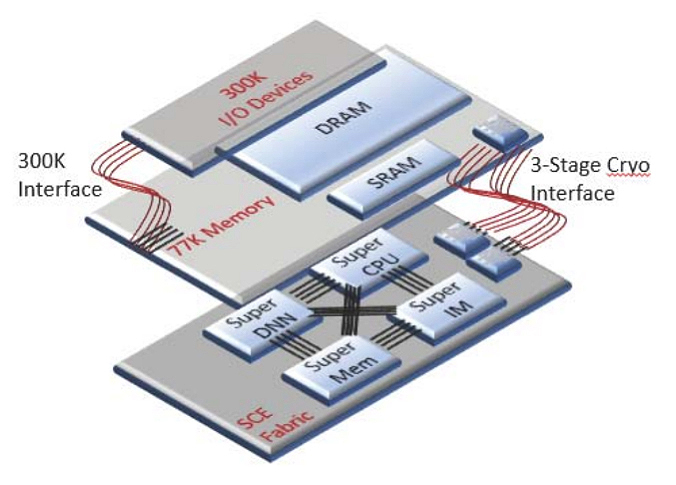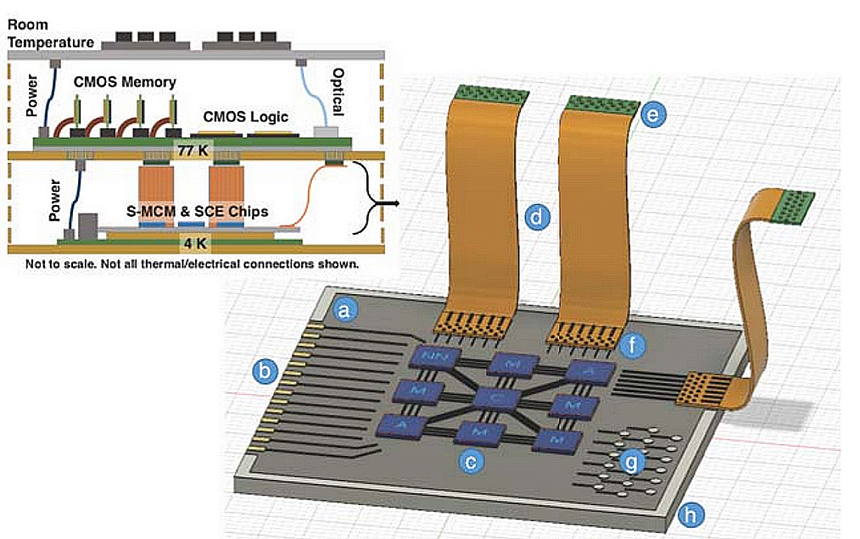ECE faculty are key partners in ambitious $15M project to produce superconductive integrated circuits and systems

Chips will use 100 to 1,000 times less power, operate at least 10 times faster
Cloud computing that supports so much of our digital society—from Facebook to Google to Amazon—is fast but uses incredible amounts of energy.
“Data centers are filled with row after row of multiprocessors, and every chip dissipates hundreds of watts of energy,” says Eby Friedman, distinguished professor of electrical and computer engineering at the University of Rochester. “The energy required to support all of the cloud computing in the world is about five percent of the total energy on the planet. It’s shocking.”
Friedman and three colleagues at Rochester are key partners in an ambitious, $15 million project, led by the University of Southern California, to develop next-generation, superconductive integrated circuits—on chips a third of an inch in size—that would be at least 100 times more energy efficient and operate more than 10 times faster than the CMOS (complementary metal oxide semiconductor) technology currently used.
“With fundamental CMOS scaling limits close in sight, the time is ripe... to explore emerging disruptive computing technologies,” says project leader Massoud Pedram, one of six USC faculty members engaged in the project.
Funded with a grant from National Science Foundation’s Expeditions in Computing Program, the project also includes individual faculty members from Auburn, Cornell, Northeastern and Northwestern Universities in the US, and Yokohama National University in Japan. The project is one of only two national Expedition grants announced this year.
Applications and challenges
The new technology could have applications not only in cloud computing, but space programs and quantum computing, says Friedman, who is the associate director of the project. The new technology could pave the way for processing increasingly massive data sets—such as those needed for drug development and modeling climate change—by providing levels of speed and energy efficiency not achievable in existing or foreseeable CMOS technologies.
The team will develop an integrated system that incorporates a superconducting central processing unit (CPU), neural network accelerator, and Ising Machine solver.
Central to this system are integrated circuits based on superconductive Josephson junctions that would operate at -321 degrees Fahrenheit (4K). The Josephson junctions store 0 and 1 logic values by creating or removing persistent currents in superconductive loops. The Josephson junctions are combined into a special logic family called single flux quantum (SFQ). Since these loops exhibit zero resistance, the circuits do not lose energy loss as with CMOS technologies.
Friedman, who has worked extensively developing SFQ design methodologies, says the costs of maintaining the chips at cryogenic temperatures is easily offset by the gains in computing performance and increased efficiency in energy use.
He will lead a circuits and architecture team that will build on recent advances in SFQ technology— including work funded by multiple IARPA (Intelligence Advanced Research Projects Activity) projects in his own lab—to bolster the amount of memory that can be stored and increase the number of Josephson junctions on each integrated circuit. He is confident the project can overcome these and other technological challenges.
“This isn’t a device or technology problem,” Friedman emphasizes. “This seven-year project is about designing superconductive systems, integrating different components to the point where we can use the system in real and important applications.”

How Rochester will contribute to the project
The $2.6 million share of the funding received by Rochester will enable five to ten graduate students a year to participate in the project, with 15 or more students completing their PhD.
In addition to Friedman, the following University of Rochester faculty members will work on this project:
Mark Bocko, a distinguished professor of electrical and computer engineering, who is an expert in audio and acoustic signal processing, with previous research experience in digital superconductive electronics, quantum coherent electronics, and quantum computing. Bocko will serve on the integration and interface team whose tasks include developing new cables and other interfaces to move data between components operating at different cryogenic temperatures.
Selcuk Kose, associate professor of electrical and computer engineering and an expert in on-chip power delivery and hardware security. Kose will work with the circuits and architecture team, the integration and interface team, and another team examining the business and socioeconomic impacts of superconductive computing.
Roman Sobolewski, professor of electrical and computer engineering, and an expert in applied superconductivity, condensed matter physics, and ultrafast electronics and opto-electronics. He will lead Rochester’s outreach efforts to introduce underrepresented minority and female students to basic computing principles that underly the project,
Sobolewski will work with the University’s Kearns Center for Leadership and Diversity. The center encourages Rochester City high school students to consider STEM fields and provides a pipeline for these students to enter college and pursue advanced degrees.
Industry involvement, trained workforce is critical to acceptance
SeeQC, Synopsys, Raytheon, Resilient Solutions, Amazon, Facebook, and other companies will be represented on the project’s Industrial Advisory Board and will collaborate on various aspects of the project.
“Right now, there are probably, at best, only a couple of dozen people on the planet who know how to design single flux quantum systems,” Friedman says. Engaging companies in the project, and also training students as a potential workforce in the field, will be crucial to convincing industry to adopt this new technology.
He expects companies to start paying “a great deal of attention” to the project in two to three years, when the team hopes to unveil neural networks, processors, and other demonstration systems.
“I would say that within five years we’ll see SFQ-based commercial applications, particularly with regard to cloud computing and quantum computing,” Friedman says.

